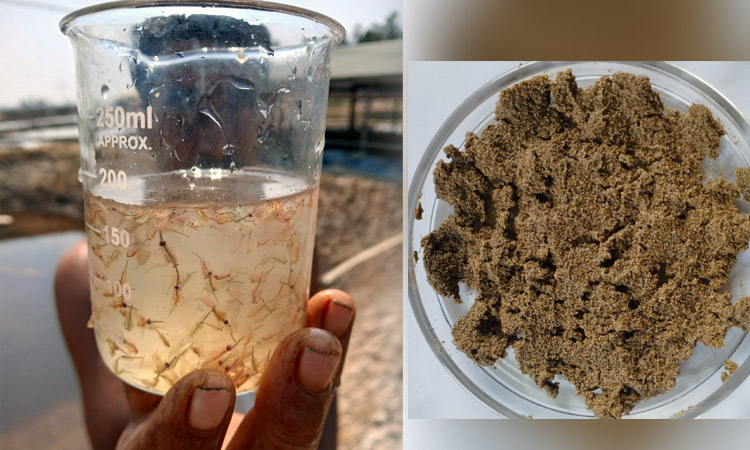News Flash

By Ridwan Ahmed
CHITTAGONG UNIVERSITY, Nov 14, 2025 (BSS) - Researchers at the Chittagong University's Institute of Marine Sciences have successfully developed an integrated system to cultivate both Artemia and salt in the same field, opening new possibilities for the fisheries sector and coastal livelihoods.
Artemia, a tiny saltwater crustacean widely used as a highly nutritious live feed in fish and shrimp hatcheries, is currently imported entirely from abroad.
In Bangladesh, salt and Artemia have always been produced separately. The new system will now allow coastal farmers to raise Artemia while producing salt, reducing import dependency and increasing income opportunities.
According to the researchers, Artemia can be cultured directly in coastal salt pans using a combined agro-aquaculture method. The approach enables farmers to produce Artemia biomass, cysts, flakes, and high-quality salt at the same time.
As Artemia consume dissolved organic matter, the water used in the cultivation process becomes cleaner, resulting in purer salt than that typically produced in the country.
The research team has recently completed a research project on this method and published a handbook titled "Commercialization of Artemia Biomass and Cyst Produced in Saltpans for Livelihood Security of Coastal Community, Bangladesh."
The project was supervised by Professor Dr. M. Shafiqul Islam. The research team included Prof Aysha Akhtar, Associate Prof Md. Mostafa Monwar, Assistant Prof Mohammad Nesarul Hoque, Mitu Ranjan Sarker and researcher Alam Parvez.
Funded by the Department of Fisheries under the Sustainable Coastal and Marine Fisheries Project (SCMFP), the study began in June 2024 and completed field operations in July 2025.
Ten students of the department also worked as research assistants: Md. Nafiz Mahmud, Esha Salbeen, Maruf Ahmed, Shahriya Jahan Tisha, Nahil Sarkar, Tasnim Akhtar, Riku Rani Devi, Mercy Meenakshi Mrong, Omar Hasnat Siddiq Tanmoy and Homaira Akhtar.
The manual outlines the basics of Artemia, the advantages of integrated production, steps for field preparation, feeding, biomass and cyst collection, salt extraction, flake processing, and marketing.
The researchers believe that once the system is adopted on a wider scale, Bangladesh will advance in sustainable aquaculture, save foreign currency and strengthen its Blue Economy ambitions. They say the method can raise coastal incomes by offering alternative year-round production options.
Researcher Alam Parvez said fish and shrimp hatcheries rely heavily on Artemia, all of which is imported. Locally grown Artemia can be used live for hatcheries, while adult biomass can be turned into flakes for storage.
He said affordable sheds can be set up in salt fields to produce biomass, cysts, and salt throughout the year at low cost.
Prof Aysha Akhtar said the project aimed to produce Artemia biomass and cysts and prepare flakes suitable for hatchery use.
She said integrated production will help increase farmers' incomes and improve salt quality. "If these are utilized effectively, imports will fall, foreign exchange will be saved, employment will rise, and farmers' livelihoods will improve," she added.
Project lead Dr. Shafiqul Islam said the team trained salt farmers directly in the field on how to cultivate Artemia and salt together. They also demonstrated harvesting, storing, and processing techniques.
"If this method can be expanded along Bangladesh's nearly 700-kilometre coastline, it will make a significant contribution to our national Blue Economy goals," he said.
Looking ahead, he said the next step is to engage government agencies and private investors.
With proper incentives and local capacity-building, Bangladesh could develop a promising Artemia-based industry similar to those in South and Central Asia. "We are ready to assist anyone interested in research or commercial ventures," he added.